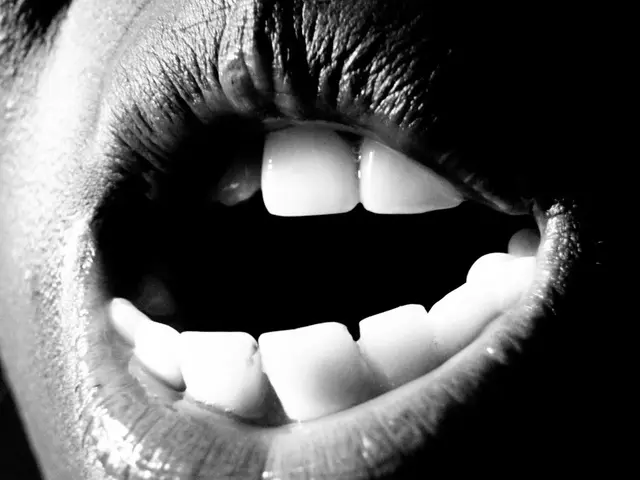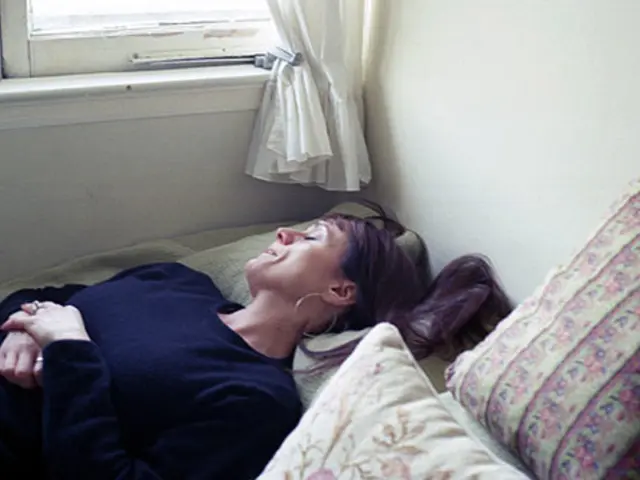Fresh Optimism for Individuals Struggling with Idiopathic Hypersomnia
Let's Get Real About Idiopathic Hypersomnia
Idiopathic hypersomnia (IH) isn't a household name like narcolepsy, but trust us, it's a real doozy. IH is characterized by excessive daytime sleepiness (EDS) that messes with your everyday life, causing you to sleep way more than the average Joe.
Dr. Nancy Foldvary-Schaefer, a sleep specialist, knows the ins and outs of IH. She's investigated the effects of lower-sodium oxybate, a drug potentially filling a much-needed gap in the treatment of people with this debilitating disorder.
What is Idiopathic Hypersomnia?
Imagine being constantly sleepy, no matter how much shut-eye you get. People with IH battle that reality every single day. Symptoms include:
- Regularly sleeping more than 9 hours per day, without feeling refreshed.
- Difficulty waking up, sometimes called "sleep drunkenness."
- Naps that don't refresh you.
- An uncontrollable urge to go back to sleep.
- Cognitive fog affecting memory, focus, and attention.
- Headaches galore.
IH impacts your social life, work, and driving. It's isolating, and the struggles can be endless.
Current Treatments for Idiopathic Hypersomnia
There's no one-size-fits-all solution for IH. Doctors often prescribe stimulants like amphetamine, armodafinil, methylphenidate, or modafinil. But these meds don't work like magic—they don't completely normalize wakefulness for people with IH.
New Medication for Idiopathic Hypersomnia
A new drug, lower-sodium oxybate (LXB), is expected to become the first FDA-approved treatment for IH. Initial trial research shows that LXB significantly reduces IH symptoms and is generally well-tolerated by patients.
"Compared with placebo, LXB significantly reduced the severity of every clinically meaningful symptom of IH," Dr. Foldvary-Schaefer states.
The new drug could potentially be safer for all populations, as it has 92% less sodium than previous sodium oxybate treatments, making it less risky for those with a higher prevalence of cardiovascular disease often associated with IH patients.
How is Idiopathic Hypersomnia Different from Narcolepsy?
Unlike people with IH, those with narcolepsy experience cataplexy—a sudden loss of muscle tone triggered by strong emotions. Cataplexy can last for seconds or minutes. Type 2 narcolepsy, without cataplexy, presents similarly to IH. Doctors can differentiate them through a 24-hour sleep test called the Multiple Sleep Latency Test (MSLT).
Diagnosing IH can be challenging due to the absence of readily accepted biomarkers or blood tests. Unfortunately, the mystery surrounding IH makes proper diagnosis difficult, leaving both patients and medical professionals in a tight spot.
The Scoop on Idiopathic Hypersomnia's Commonness
Research suggests that IH may be as common as narcolepsy. It's feasible that the increased prevalence isn't due to the disease growing more widespread, but rather because people are finally seeking help.
Classified as a rare disorder by the National Institutes of Health, hopefully increased awareness through clinical trials for narcolepsy will lead to a better understanding of IH, including diagnosis and treatment methods. Stay tuned!
- The excessive daytime sleepiness associated with idiopathic hypersomnia (IH) can significantly impact one's social life, work, and driving, often leading to a feeling of isolation due to the challenges facing sufferers.
- A new drug, lower-sodium oxybate (LXB), which is expected to become the first FDA-approved treatment for IH, may potentially offer a safer and more effective treatment option for those suffering from this chronic sleeping disorder, as it has 92% less sodium than previous sodium oxybate treatments.
- Proper diagnosis of IH can be difficult due to the absence of readily accepted biomarkers or blood tests, leaving both patients and medical professionals in a challenging position as the mystery surrounding IH continues.
- As research suggests that IH may be as common as narcolepsy, increased awareness and understanding of idiopathic hypersomnia, including diagnosis and treatment methods, could lead to a significant improvement in the lives of those suffering from this condition. Improved health and wellness, including mental health support, are crucial for these individuals navigating the challenges of this chronic sleeping disorder.








